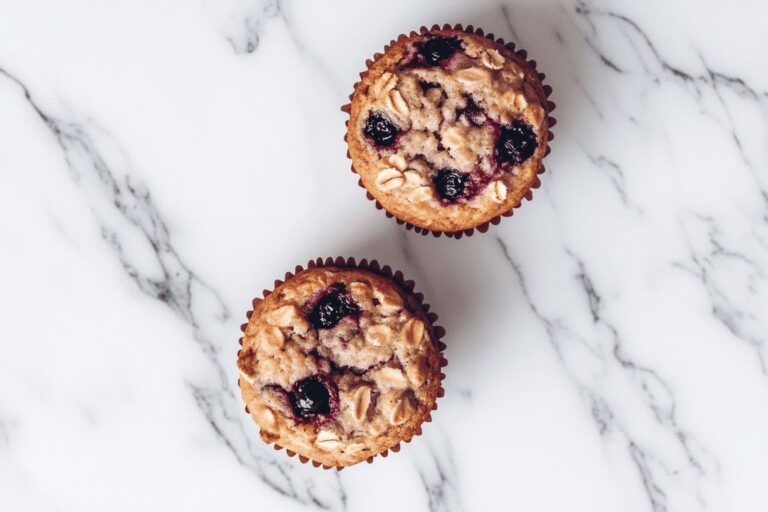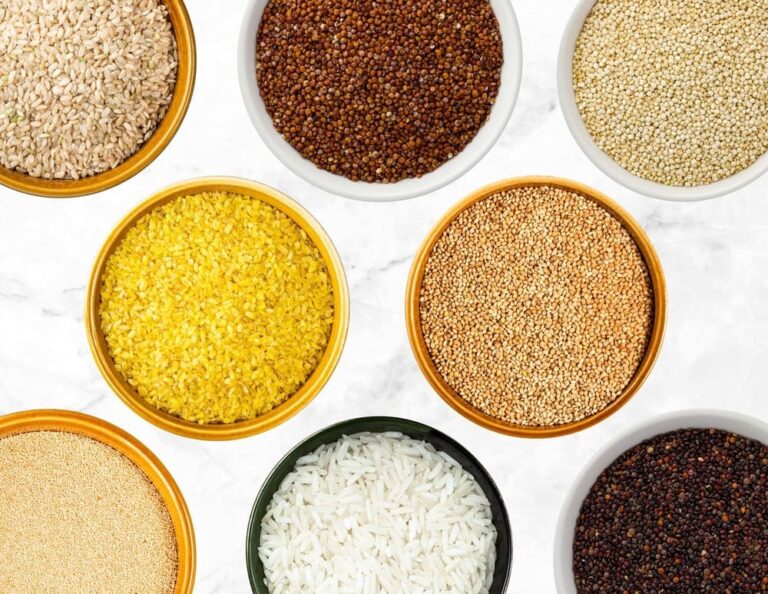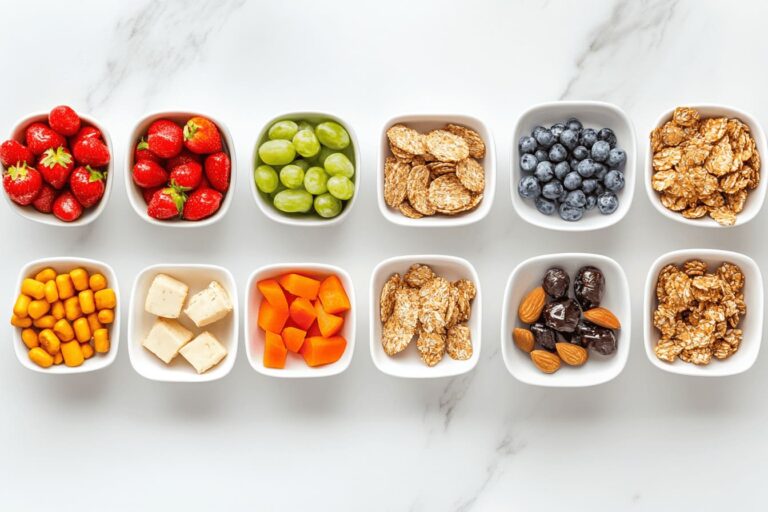25 EASY Breakfast Ideas for Gestational Diabetes (Just 15 Mins!)
This post may contain affiliate links. That means if you click and buy, I may receive a small commission (at zero cost to you). Please see my full disclosure policy for more details.
Here are the 25 breakfast options for gestational diabetes (GDM).

Struggling with high fasting numbers in the morning? Unsure what breakfast won’t cause a spike? Tried a few options but still seeing spikes? Feel like low-carb choices are limited and leave you hungry? You’re not alone!
I used to grab instant oatmeal on the go, but with gestational diabetes, that’s no longer an option.
So, after a lot of trial and error (and a few sugar spikes along the way), I finally found the right breakfast options for gestational diabetes that worked for me.
SIMPLE, FAST and EASY to prepare.
What’s even more incredible is that I only gained 8 kg throughout my entire pregnancy, thanks to this list of 25 easy and healthy breakfast options for gestational diabetes.
You may be interested: 20 easy breakfast options (no eggs)
Why is Breakfast Important?
Here’s why breakfast is a game-changer when managing gestational diabetes:
- Blood Sugar Control:
- After an overnight fast, the liver naturally releases glucose to provide energy. Eating breakfast signals your liver to stop producing glucose, and gives the body an external source of glucose to manage instead.
- Energy Boost:
- A nutrient-rich breakfast gives a slow, steady release of energy to help you stay focused and productive.
- Nutritional Intake:
- Breakfast is an opportunity to include important nutrients such as calcium, iron, protein, and vitamins that are essential for both mother and baby.
- Reduces Cravings and Overeating:
- Eating breakfast helps you feel fuller for longer, reducing the risk of unhealthy snacking or overeating at subsequent meals.
The word breakfast literally means breaking the overnight fast, which is crucial for stabilizing your morning blood sugar after hours without food.
Can I Skip Breakfast with Gestational Diabetes?
NOOOOO! I know sometimes it is really tempting to skip.
But skipping breakfast with gestational diabetes is a no-go:
- Blood Sugar Spikes: Skipping breakfast can lead to higher blood sugar levels later in the day because your body becomes more insulin-resistant after fasting.
- Energy Crashes: Without breakfast, you might feel low on energy, sluggish, and more likely to overeat during your next meal.
- Risk of Hypoglycemia: Skipping meals can cause low blood sugar (hypoglycemia – typically below 70 mg/dL). Did you know that hypoglycemia can be even more dangerous for you and your baby than hyperglycemia?
In fact, some studies have shown that eating breakfast may reduce the risk of type 2 diabetes.
To help you, my 25 breakfast options for gestational diabetes are all easy, quick and simple to prepare.
In case you do not know, I have crafted quick and easy ideas for lunch, dinner, desserts and even bedtime snacks too! Perfectly suitable for busy moms.
Key Nutritional Components
The American Diabetes Association recommends that pregnant women should consume at least 1,800-2,000 kcal of calorie, 175 g of carbohydrate, a minimum of 71 g of protein, and 28 g of fiber daily.
So if you break it down into every meal, here’s how you choose your breakfast options for gestational diabetes:

Our easy gestational diabetes breakfast ideas are crafted to help you hit those goals as closely as possible.
- Complex Carbohydrates: Stick to complex carbs like whole grains, oats, or sweet potatoes. These digest slowly, keeping your blood sugar in check.
- Lean Protein: Protein helps slow down the absorption of carbs, preventing spikes.
- Unsaturated Fats: Adding healthy fats like avocado, nuts, or olive oil can further stabilize blood sugar and keep you feeling full longer.
- Fiber: Fiber-rich foods like whole grains, fruits (low glycemic), and vegetables help improve digestion and control blood sugar.
- Hydration: Water or low-sugar beverages are essential for overall health and managing blood sugar.
Tips: Make sure to stick to portion size for sugar control and always go for low glycemic index foods.
Related: Low glycemic index food list up to +650 foods
Disclaimer: The information provided here is based on personal experience and research. Always consult with a healthcare professional or registered dietitian for personalized advice on breakfast options for gestational diabetes.
I have mild anemia, so my dietitian recommended I bump up my intake of meats, seafood, and even fortified cereals to boost my iron levels.
Everyone’s needs are different.
Meal Prep Tips
If you’re like me, mornings are pure chaos—getting two little girls ready, managing tantrums, and squeezing in meetings.
Hence, I focus on being smart with meal prep to get quick, balanced breakfasts daily:
- Plan Ahead:
- Spend a few minutes each weekend planning your breakfast menu.
- Chop veggies, cook grains, and portion out proteins in advance.
- Still clueless? You can check out my 7-day meal plan (with printable grocery list and easy recipes PDF)
- Cook in Bulk:
- Prepare large batches of items like scrambled eggs. Store them in the fridge for quick, nutritious meals throughout the week.
- Make Grab-and-Go Options:
- Prepare easy, portable breakfasts like overnight oats, chia pudding, or egg muffins.
- Use Freezer-Friendly Meals:
- Cook and freeze items like low-carb pancakes or breakfast burritos. Just reheat for a convenient, balanced breakfast.
Managing mornings with gestational diabetes can be a challenge, but a little prep can make a big difference.
25 Breakfast Options for Gestational Diabetes
What can I eat for breakfast with gestational diabetes?
1. Veggie Omelette with Whole-Grain Toast

Whisk 2 eggs. Heat a skillet, lightly coat with oil, and cook eggs until set. Add 1 cup spinach and ½ cup mushrooms, cook until wilted, then fold the omelette. Serve with 2 whole-grain toasts and ¼ avocado.
Macronutrients: ~550 calories, 35-40g carbs, 24g protein, 25g fat, 10g fiber
Caution: No significant high GI ingredients; use minimal oil.
2. Greek Yogurt with Almonds, Berries and Chia Seeds
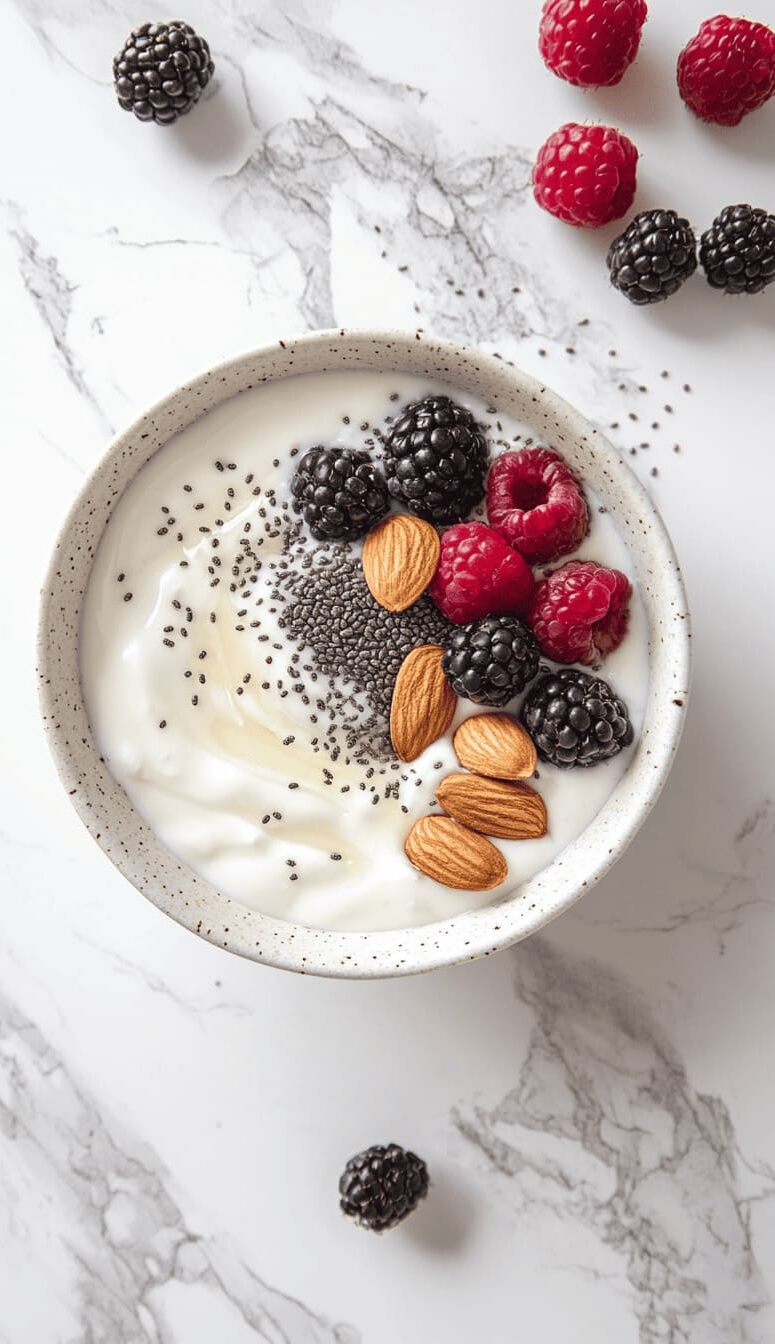
Spoon 1 cup Greek yogurt into a bowl. Top with ¼ cup almonds, ½ cup berries, and a sprinkle of chia seeds for extra fiber.
Macronutrients: ~400 calories, 30g carbs, 28g protein, 25g fat, 10g fiber
Caution: Ensure Greek yogurt is unsweetened and low in fat.
3. Chocolate Chia Pudding with Protein Powder and Fresh Berries

Combine 3 tablespoons of chia seeds, 1 cup of unsweetened chocolate almond milk and 1 scoop of chocolate protein powder. Stir until smooth. Refrigerate for at least 3 hours or overnight to thicken. Top with ¼ cup mixed berries. (Note: this will make 2 servings of ¾ cup each)
Macronutrients: ~350 calories, 30g carbs, 30g protein, 15g fat, 14g fiber
Caution: Ensure almond milk and protein powder are unsweetened.
4. Oatmeal with Chia Seeds, Strawberries and Protein Powder

Cook 2/3 cup oatmeal according to package instructions. Stir in 1 tbsp chia seeds and 1 scoop protein powder. Top with ½ cup sliced strawberries.
Macronutrients: ~350 calories, 35g carbs, 30g protein, 8g fat, 8g fiber
Caution: Choose plain oatmeal and protein powder to avoid added sugars.
5. Whole-Grain English Muffin with Egg and Spinach
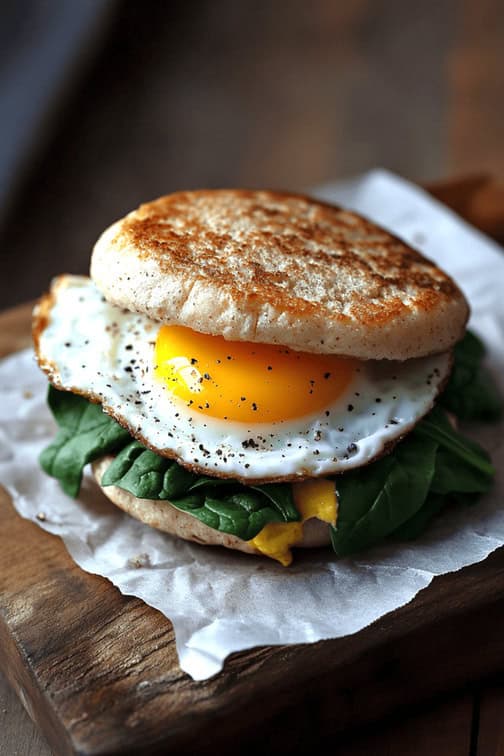
Toast 1 whole-grain English muffin. Cook 2 eggs to your liking (fried, poached, or scrambled). Sauté 1 cup spinach in a skillet until wilted. Assemble by placing the eggs and spinach on the muffin.
Macronutrients: ~350 calories, 30g carbs, 20g protein, 25g fat, 3g fiber
Caution: Use whole-grain muffins (GI of 45) to avoid high GI options.
6. Apple Cinnamon Cereal Bowl

Place 1 cup low-sugar bran flakes in a bowl, pour ½ cup unsweetened almond milk over it, and top with ½ cup diced apple. Sprinkle 1 teaspoon ground cinnamon and 1 tablespoon chopped walnuts. Stir gently and enjoy immediately.
Macronutrients: 300 calories, 42g carbs, 6g protein, 12g fat, 8g fiber
Caution: Contains moderate GI apple; balance with walnuts for healthy fats.
7. Cottage Cheese with Pineapple and Walnuts
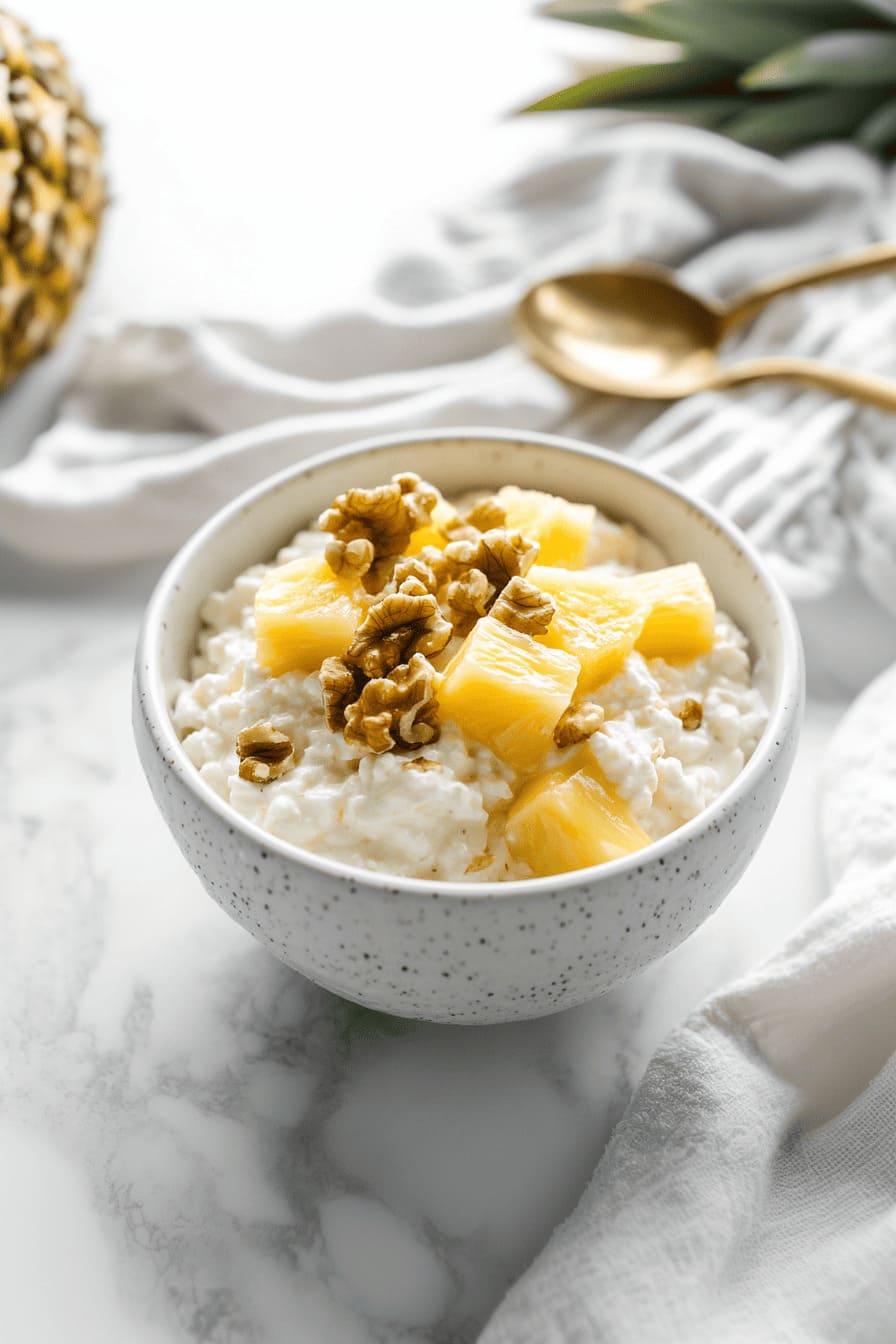
Place 1 cup low-fat pasteurized cottage cheese in a bowl. Top with ½ cup pineapple chunks and ¼ cup chopped walnuts. Mix together.
Macronutrients: ~400 calories, 30g carbs, 28g protein, 15g fat, 4g fiber
Caution: Pineapple has a higher GI (51-73); portion control is key.
8. Almond Flour Pancakes with Fresh Berries

Prepare ¼ cup almond flour pancake batter, mixing in ½ scoop of protein powder. Cook pancakes on a skillet until golden brown. Serve with ½ cup fresh berries and a sprinkle of chia seeds for extra fiber.
Macronutrients: ~600 calories, 30g carbs, 35g protein, 25g fat, 10g fiber
Caution: Use almond flour and protein powder without added sugars.
9. Peanut Butter Cup Tropical Smoothie
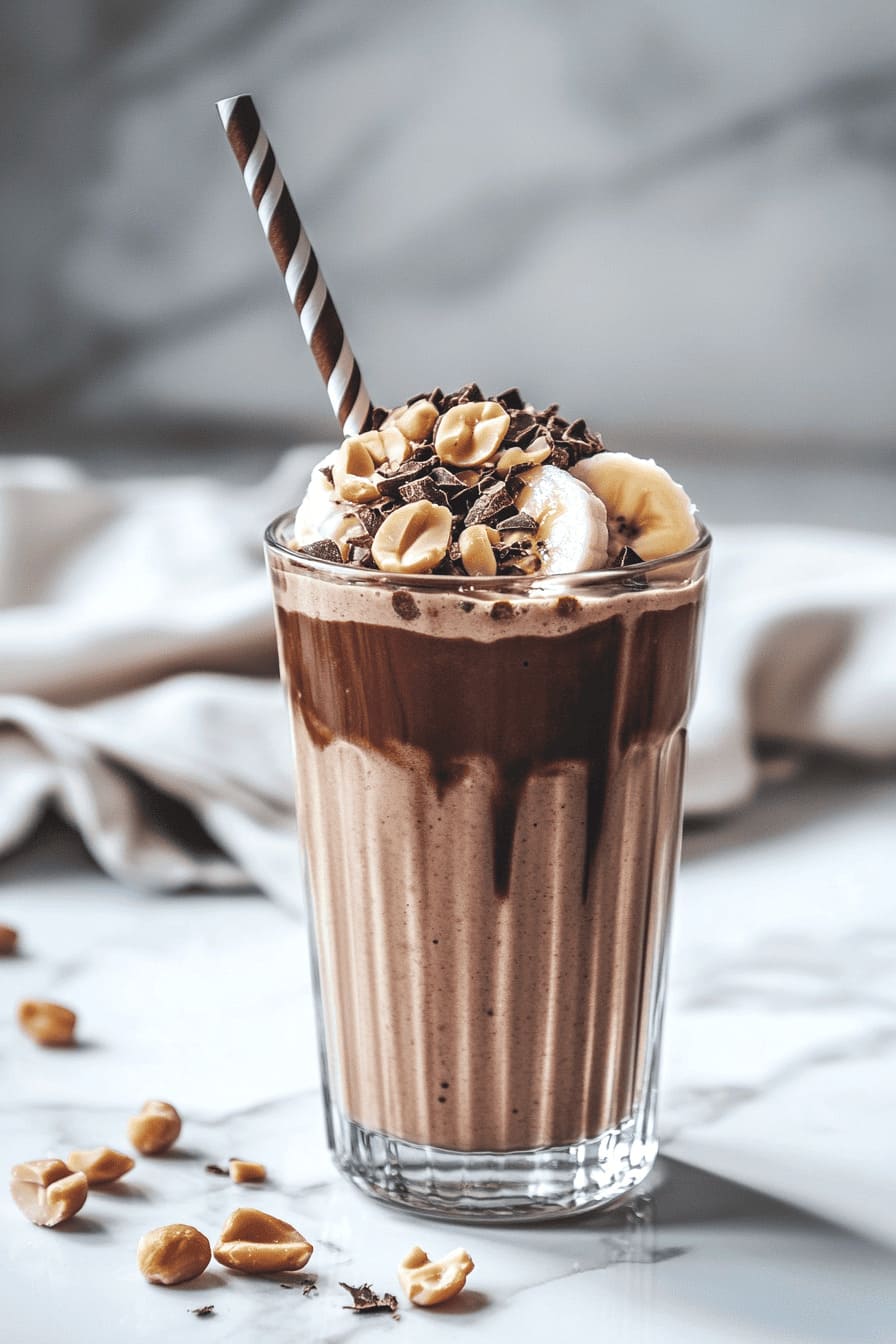
In a blender, blend ½ cup unsweetened almond milk, 1 tbsp peanut butter, 1 tbsp chia seeds, 1 tbsp unsweetened cocoa powder, and ½ teaspoon vanilla extract. Add 1 frozen banana with ice. Blend on high for 30-45 seconds. Pour into a glass and garnish with chopped peanuts, cacao nibs, and the banana slices.
Macronutrients: 380 calories, 38g carbs, 16g protein, 22g fat, 10g fiber
Caution: Use low-sugar almond milk, peanut butter and cocoa powder.
10. Turkey and Veggie Breakfast Wrap
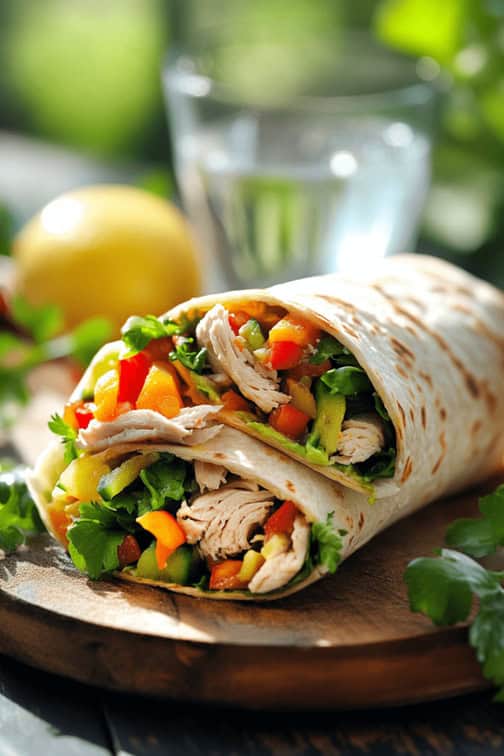
Spread 2 tbsp hummus on a whole-wheat wrap. Layer with 3 oz sliced turkey, ½ cup mixed veggies (like spinach, bell peppers, and shredded carrots), and your favorite spices. Drizzle with olive oil or dressing, then roll tightly and cut in half!
Macronutrients: ~400 calories, 30g carbs, 30g protein, 20g fat, 6g fiber
Caution: Ensure the wrap is low in added sugars.
11. Peanut Butter and Banana on Whole-Grain Toasts
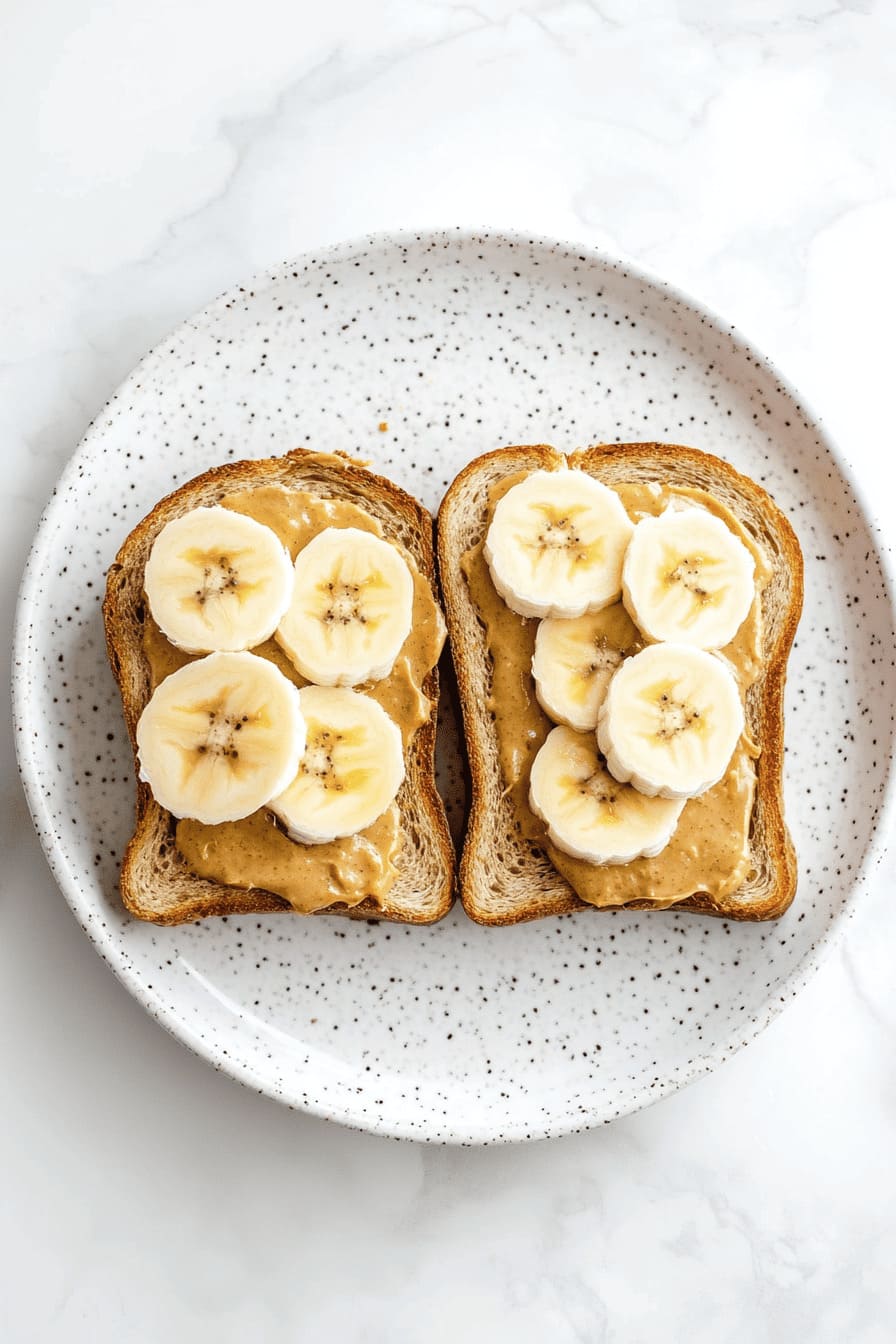
Toast 2 slices of whole-grain bread. Spread 2 tbsp natural peanut butter evenly over the toast. Top with banana slices.
Macronutrients: ~350 calories, 40g carbs, 20g protein, 20g fat, 13g fiber
Caution: Use a small amount of banana due to its higher GI of 51.
12. Smoked Salmon Bagel with Cream Cheese and Cucumber

Spread 2 tbsp pasteurized cream cheese on both halves of a toasted whole grain bagel. Layer 2 oz smoked salmon, ¼ cup sliced cucumber, and a sprinkle of black pepper.
Macronutrients: ~400 calories, 30-35g carbs, 20g protein, 15g fat, 6g fiber
Caution: Ensure smoked salmon is cooked or pasteurized to avoid listeria risk; be mindful of bagel’s carb content.
13. Avocado Toast with Egg and Tomato
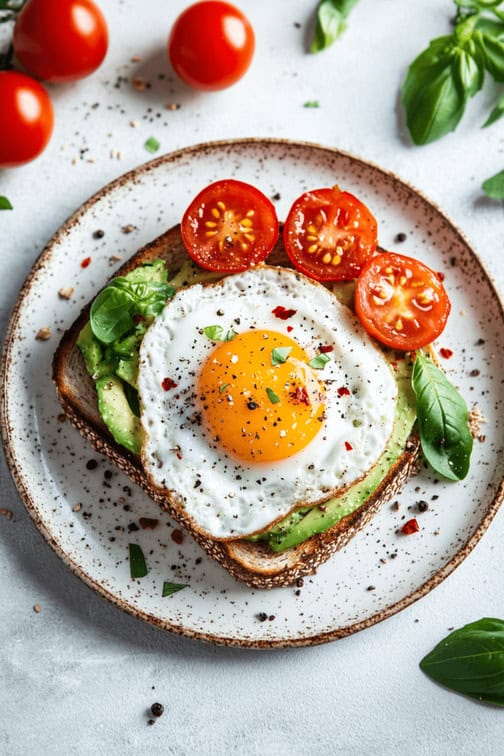
Toast a slice of whole-grain bread. Mash 1 avocado and spread it over the toast. Cook an egg to your liking and place it on top. Add sliced tomatoes.
Macronutrients: ~430 calories, 25g carbs, 15g protein, 30g fat, 15g fiber
Caution: Ensure whole-grain toast is used (GI = 51-69).
14. Scrambled Eggs with Tomatoes and Bell Peppers

Whisk 2 eggs in a bowl. Heat a skillet with a bit of oil. Add ½ cup diced tomatoes and ½ cup bell peppers, cooking until soft. Pour in eggs and scramble until fully cooked. Serve with 2 slices of whole grain bread.
Macronutrients: ~400 calories, 30g carbs, 22g protein, 25g fat, 7g fiber
Caution: No significant high GI ingredients; use minimal oil.
15. Mushroom, Spinach, and Cheese Quesadilla Wrap

Spread 2 tbsp pasteurized vegan cream cheese on a whole grain tortilla. Top with ½ cup sautéed mushrooms and ½ cup spinach. Fold the tortilla into a wrap and cook in a hot skillet for 2-3 minutes on each side until golden and the cheese melts.
Macronutrients: ~400 calories, 30g carbs, 15g protein, 18g fat, 6g fiber
Caution: Ensure mushrooms are thoroughly cooked to reduce the risk of foodborne illness.
16. Sweet Potato Hash with Eggs

Dice 1 cup sweet potatoes and cook in a skillet with a small amount of oil until tender and crispy. Top with 2 cooked eggs.
Macronutrients: ~400 calories, 30g carbs, 20g protein, 25g fat, 5g fiber
Caution: Sweet potatoes have a high GI of 81; portion control is important.
17. Low-Sugar Granola with Unsweetened Almond Milk and Nut Butter

Place ½ cup low-sugar granola in a bowl, pour ½ cup unsweetened almond milk over it, and top with 1 tablespoon almond butter for healthy fats.
Macronutrients: 410 calories, 38g carbs, 18g protein, 28g fat, 8g fiber
Caution: Nut butter adds extra fat; adjust portions if you’re aiming for a lighter meal.
18. Cauliflower Hash Browns with Poached Eggs and Diced Sweet Potatoes

Prepare 1 cup cauliflower hash browns according to your recipe or package instructions. Poach 2 eggs and place on top of the hash browns. Serve with a small portion of 1 cup diced sweet potatoes.
Macronutrients: ~500 calories, 45g carbs, 22g protein, 25g fat, 6g fiber
Caution: Limit oil when cooking the hash browns to control fat content.
19. Tuna Salad on Whole-Grain Toast
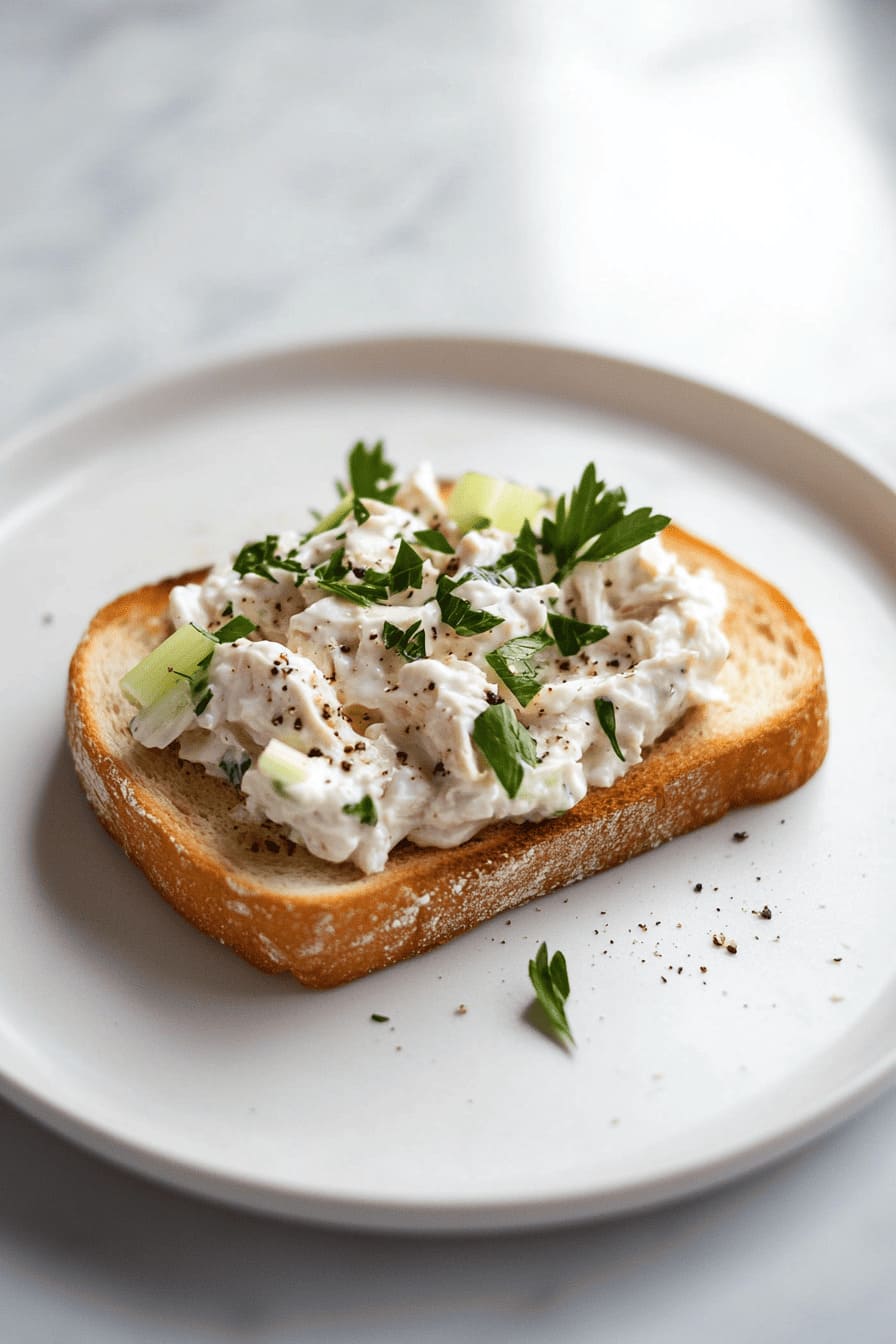
Spread ½ cup tuna salad (made with tuna, Greek yogurt, and diced celery) onto 1 slice of whole-grain toast. Top with 1 tablespoon chopped parsley for garnish and a sprinkle of black pepper.
Macronutrients: ~400 calories, 32g carbs, 30g protein, 13g fat, 8g fiber
Caution: Ensure the tuna is packed in water, not oil, to control fat content.
20. Zucchini Fritters with Cottage Cheese, Cherry Tomatoes, and Chia Seeds

Prepare 2 zucchini fritters according to your recipe. Serve with a side of ½ cup low-fat pasteurized cottage cheese, ½ cup halved cherry tomatoes, and a sprinkle of chia seeds for added fiber.
Macronutrients: ~300 calories, 30g carbs, 20g protein, 10g fat, 8g fiber
Caution: Avoid excessive oil when frying fritters to reduce fat content.
21. Almond Flour Waffles with Greek Yogurt, Cinnamon, and Fresh Berries

Prepare almond flour waffle batter as per your recipe or package instructions. Cook 2 waffles in a waffle iron. Serve with ½ cup Greek yogurt, a sprinkle of cinnamon, and a side of ½ cup fresh berries for added fiber and flavor.
Macronutrients: ~500 calories, 40g carbs, 30g protein, 25g fat, 5g fiber
Caution: Use unsweetened Greek yogurt and almond flour without added sugars.
22. Low-Carb Crepes with Cottage Cheese, Chives, and Diced Tomatoes

Prepare 3 low-carb crepes according to your recipe. Fill with ½ cup low-fat, pasteurized cottage cheese, sprinkle with fresh chives, and add ¼ cup diced tomatoes.
Macronutrients: ~450 calories, 25g carbs, 25g protein, 14g fat, 6g fiber
Caution: Use minimal oil for cooking crepes, and ensure cottage cheese is low in fat.
23. Smoked Mackerel on Whole-Grain Toast with Cucumber Slices
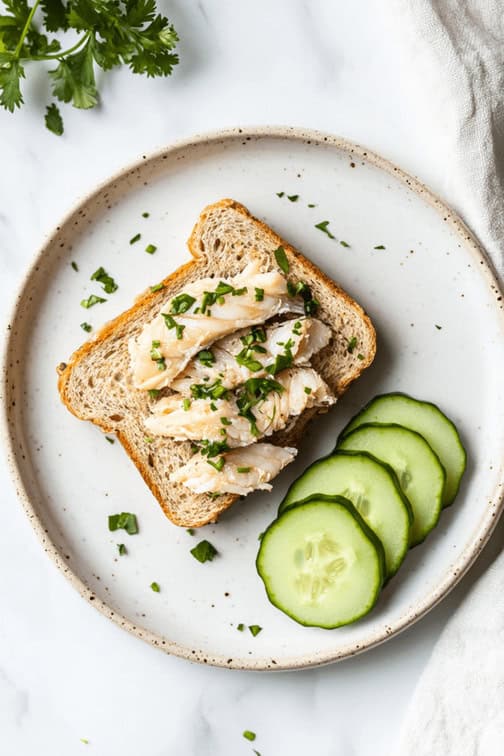
Toast two slices of whole-grain bread. Top with 3 oz smoked mackerel and ½ cup cucumber slices.
Macronutrients: ~350 calories, 25g carbs, 26g protein, 15g fat, 6g fiber
Caution: Watch sodium content in smoked mackerel and make sure it is fully-cooked to prevent listeria infection. Hot-smoked ones are usually fully-cooked compared to cold-smoked.
24. Quick Avocado and Smoked Salmon on Rice Cakes
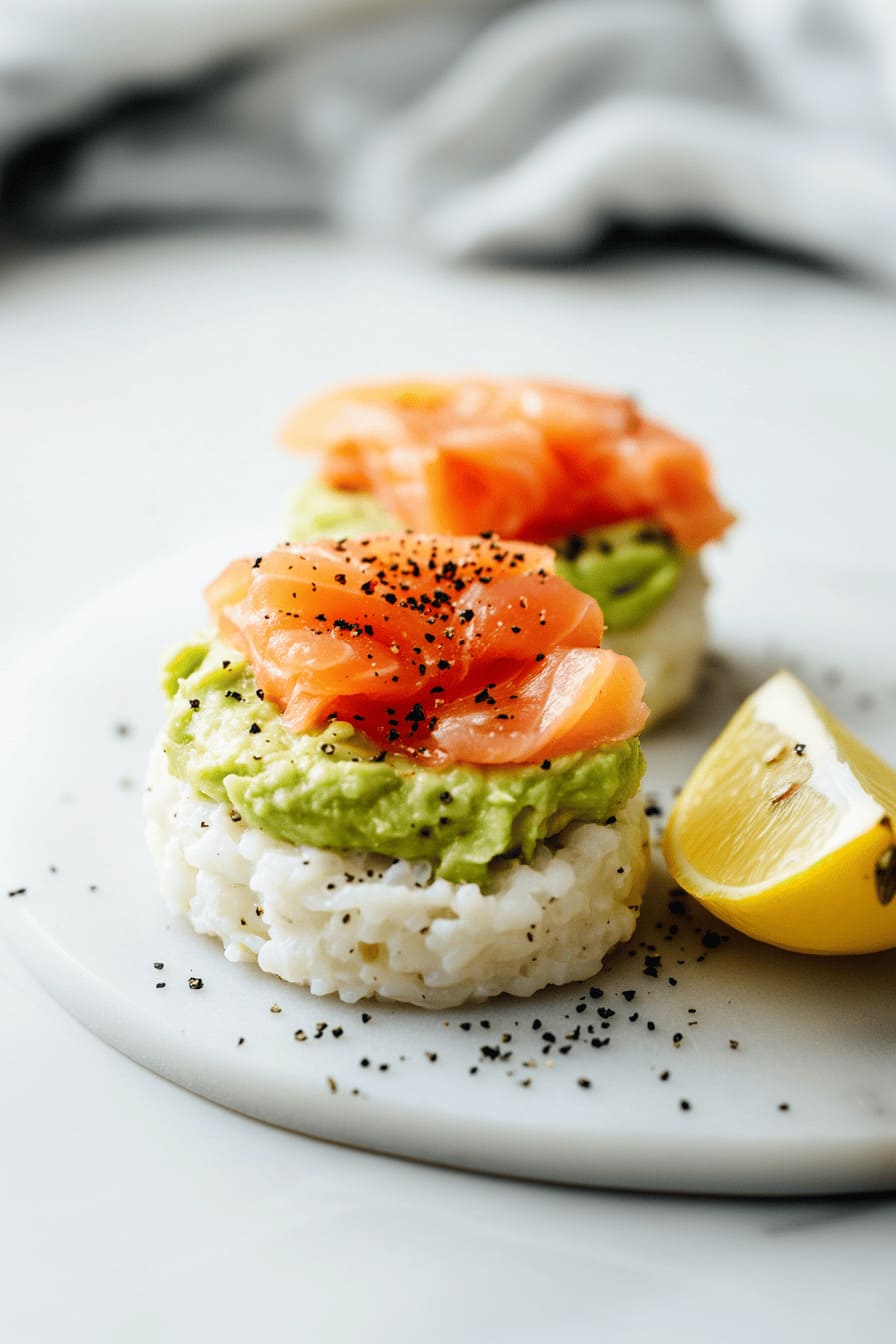
Spread ½ mashed avocado onto 2 plain rice cakes. Top with 3 oz smoked salmon, a sprinkle of black pepper, and a squeeze of lemon juice.
Macronutrients: ~350 calories, 30g carbs, 30g protein, 20g fat, 5g fiber
Caution: Choose unsalted smoked salmon to manage sodium levels, and go for hot-smoked one (cold-smoked salmon is usually undercooked).
25. Caprese Salad with Fresh Mozzarella and Basil

Layer 4 oz fresh pasteurized mozzarella slices, 1 medium tomato (sliced), and fresh basil leaves on a plate. Drizzle with 1 tbsp balsamic vinegar and 1 tsp olive oil. Serve with 1 slice whole grain bread on the side.
Macronutrients: ~450 calories, 20g carbs, 20g protein, 30g fat, 7g fiber
Caution: Fresh mozzarella is high in saturated fat; opt for moderate portions. Check balsamic glaze labels for added sugars.
Related: Low-carb alternatives to white rice
Frequently-Asked Questions
Can I go very low in carb or zero carb?
Please NO!
I have seen too many people going extreme on low carb diet during their pregnancy. Hence I really need to emphasize this.
When carb intake is drastically reduced, the body enters a state called KETOSIS. In this state, the body starts breaking down fats for energy instead of glucose.
Ketosis can lead to the production of ketones, which may affect fetal brain development and growth. High levels of ketones are associated with complications such as low birth weight or developmental issues.
Always consult with your dietitian to determine the right carb amount for you and avoid ketosis.
Is oatmeal ok to eat with gestational diabetes?
Absolutely! In fact, it is my on-the-go breakfast option as it is so quick and easy.
Go for steel-cut or old-fashioned oats, which are lower on the glycemic index of 53 and packed with fiber. Instant oatmeal is generally higher in GI at 79.
Stick to a portion of 1/2 to 1 cup cooked, and make it even better by adding protein (think Greek yogurt) and healthy fats (like a sprinkle of nuts).
Avoid added sugar. You can keep it naturally sweet with fresh berries, a dash of cinnamon, or a hint of honey or maple syrup.
Can I eat a banana for breakfast with gestational diabetes?
Absolutely, yes!
Just keep it in check by choosing a small banana or half of a larger one.
Remember, ripe bananas have a higher glycemic index of 51 compared to slightly under-ripe ones at 42, so opting for the latter is a smart move.
Pair your banana with protein (like Greek yogurt) or healthy fats (such as nut butter), and mix it with lower-GI options like whole-grain toast or steel-cut oats.
Learn more: Low glycemic index food list up to +650 foods
What should diabetics drink first thing in the morning?
For a blood sugar-friendly start, opt for water to stay hydrated, unsweetened tea for a refreshing boost, or plain black coffee in moderation.
My personal favorite is a glass of water with infused lemon.
Low-fat milk or unsweetened almond milk adds protein and nutrients without excess carbs.
You can also try apple cider vinegar (ACV)—dilute 1-2 tablespoons in water for potential insulin benefits, but consult your healthcare provider first.
Avoid sugary drinks and high-calorie juices to keep your blood sugar in check during pregnancy.
Is egg good for GDM?
Yes. In fact, eggs have a glycemic index of ZERO. Look at that!
They’re packed with protein and healthy fats that help keep blood sugar levels stable and curb hunger.
Eggs are my best friend—especially boiled eggs cooked for 10 minutes.
Check out: More easy lunch, dinner, dessert and bedtime snack ideas for gestational diabetes.
Conclusion
Finding the right breakfast for managing gestational diabetes can be a game-changer.
I remember feeling completely clueless at first, worrying that my morning spikes would harm my baby. It was a struggle, and I felt guilty about my choices.
But after a month of experimenting, I finally settled into an amazing low-carb morning routine that worked wonders.
I’ve created a FREE cheat sheet—on 7 easy-to-apply hacks designed to help you reduce sugar spikes after meals by up to 40%. So you can feel more in control, guilt-free, and healthier every day!
These secrets are scientifically proven, without extreme diets or workouts!
Keep it on your fridge for quick reference and make blood sugar management a breeze.
Because you and your baby deserve the best!

